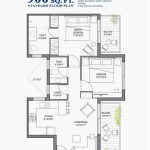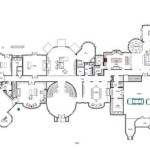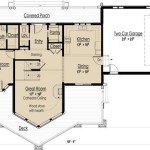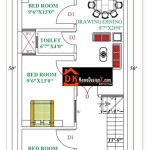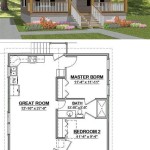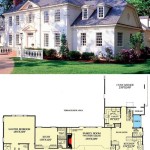Affordable House Plans For Families In Need: A Habitat for Humanity Focus
Access to safe, decent, and affordable housing is a fundamental human need. For many families, achieving homeownership remains a distant dream, particularly in the face of rising construction costs and economic uncertainties. Habitat for Humanity, a global non-profit organization, plays a crucial role in addressing this challenge by partnering with families in need to build or improve their homes. A critical aspect of Habitat’s work involves providing affordable house plans that are tailored to meet specific needs and budgets.
The availability of well-designed, cost-effective house plans is paramount to the success of Habitat for Humanity's mission. These plans must balance affordability, functionality, and durability, while also adhering to local building codes and regulations. Furthermore, they often incorporate sustainable design principles to minimize environmental impact and reduce long-term operating costs for homeowners.
Habitat for Humanity’s approach to affordable housing extends beyond simply constructing homes. The organization emphasizes community development and empowerment, working closely with partner families throughout the construction process. This hands-on involvement fosters a sense of ownership and pride, while also providing valuable skills training that can benefit families in the long run.
Key Considerations in Developing Affordable House Plans
The creation of affordable house plans involves careful consideration of various factors that directly impact both the initial construction cost and the long-term affordability for homeowners. These considerations encompass design efficiency, material selection, construction techniques, and energy efficiency.
Design Efficiency: Optimizing the floor plan is crucial to maximizing usable space while minimizing the overall footprint of the house. Simple, rectangular shapes are generally more cost-effective to build than complex designs with multiple angles and curves. Open floor plans can create a sense of spaciousness even in smaller homes, while also reducing the need for interior walls, further reducing construction costs. Efficient layouts minimize wasted space and streamline circulation patterns, ensuring that every square foot is utilized effectively. Proper planning of plumbing and electrical systems during the design phase minimizes material waste and labor costs during construction.
Material Selection: Choosing cost-effective and readily available building materials is essential for keeping construction costs down. Locally sourced materials can often be more affordable and reduce transportation expenses. Durable and low-maintenance materials are prioritized to minimize long-term repair and maintenance costs for homeowners. The selection of materials should also consider the local climate and environmental conditions to ensure the house is resistant to weather-related damage. Recycled or repurposed materials can be incorporated into the design to reduce environmental impact and potentially lower costs. Exploring alternative construction materials, such as engineered wood products or insulated concrete forms, can offer cost savings and improved energy efficiency.
Construction Techniques: Simple and straightforward construction techniques are preferred to minimize labor costs and construction time. Prefabricated components, such as wall panels or roof trusses, can speed up the construction process and reduce on-site waste. Volunteer labor plays a significant role in Habitat for Humanity projects, so the designs should be accessible to individuals with varying levels of construction experience. Standardized construction details and repetitive elements can streamline the building process and minimize errors. The use of sustainable construction practices, such as proper insulation and air sealing, can reduce energy consumption and lower utility bills for homeowners.
Energy Efficiency: Incorporating energy-efficient features into the design is vital for reducing long-term operating costs. Proper insulation in walls, roofs, and floors minimizes heat loss in the winter and heat gain in the summer. Energy-efficient windows and doors reduce air leakage and improve thermal performance. High-efficiency heating and cooling systems consume less energy and lower utility bills. Solar panels can be incorporated into the design to generate renewable energy and reduce reliance on fossil fuels. Proper orientation of the house can maximize natural sunlight and minimize the need for artificial lighting.
Beyond these core considerations, Habitat for Humanity often collaborates with architects, engineers, and other professionals to develop innovative and affordable housing solutions. These partnerships can result in creative designs that optimize space, reduce construction costs, and enhance the overall living experience for homeowners.
Examples of Affordable House Plan Designs
Habitat for Humanity utilizes a diverse range of house plan designs tailored to meet the specific needs of families and communities. These designs vary in size, style, and configuration, but all share a common goal of providing safe, decent, and affordable housing.
Small Cottage Designs: These compact homes are typically designed for smaller families or individuals and are characterized by their efficient use of space and simple construction. They often feature a single-story layout with an open floor plan, a small kitchen, one or two bedrooms, and a bathroom. These designs prioritize affordability and energy efficiency, making them ideal for families on a limited budget.
Ranch-Style Homes: Ranch-style homes are characterized by their single-story layout and low-pitched roof. They are often designed with accessibility in mind, making them suitable for elderly or disabled homeowners. These homes typically feature a spacious living area, a kitchen, two or three bedrooms, and one or two bathrooms. Ranch-style homes are relatively easy to build and maintain, making them a popular choice for Habitat for Humanity projects.
Two-Story Homes: Two-story homes offer more living space than single-story homes on the same footprint, making them a good option for larger families or those who need extra room. These homes typically feature a living area, kitchen, and bathroom on the first floor and bedrooms and a bathroom on the second floor. Two-story homes can be more expensive to build than single-story homes, but they offer greater flexibility and can be adapted to meet the changing needs of families over time.
Multi-Unit Developments: In some cases, Habitat for Humanity develops multi-unit housing complexes, such as townhouses or apartments, to provide affordable housing for multiple families. These developments can maximize land use and create a sense of community. Multi-unit developments often feature shared amenities, such as laundry facilities and common areas, which can further reduce costs for individual families.
Adaptable Designs: Recognizing that families' needs can change over time, some Habitat for Humanity house plans are designed to be adaptable. This may involve incorporating unfinished space that can be finished later as needed, or designing the house with flexible layouts that can be easily reconfigured. Adaptable designs allow families to customize their homes to meet their specific needs and preferences.
The selection of a particular house plan design depends on a variety of factors, including the size of the family, the available land, the budget, and the local building codes. Habitat for Humanity works closely with partner families to determine the best design for their individual circumstances.
The Role of Partnerships and Community Involvement
Habitat for Humanity's success in providing affordable housing is largely dependent on its partnerships with various organizations and the active involvement of the community. These partnerships and collaborations provide valuable resources, expertise, and support, enabling Habitat to build more homes and serve more families in need.
Corporate Sponsors: Corporate sponsors provide financial support, materials, and volunteer labor for Habitat for Humanity projects. These partnerships are mutually beneficial, allowing corporations to demonstrate their commitment to social responsibility while also supporting a worthy cause. Corporate sponsors often organize "build days" where their employees volunteer their time to help construct homes.
Foundations and Grant-Making Organizations: Foundations and grant-making organizations provide significant funding for Habitat for Humanity programs. These grants support a wide range of activities, including land acquisition, construction costs, and homeowner education.
Government Agencies: Government agencies provide funding, land, and other resources to support Habitat for Humanity's affordable housing efforts. Government partnerships can help Habitat navigate complex regulations and streamline the construction process. Furthermore, governmental support often helps to identify families who qualify for Habitat’s services.
Local Businesses: Local businesses provide in-kind donations of materials, equipment, and services to support Habitat for Humanity projects. These donations can significantly reduce construction costs and help Habitat stretch its resources further.
Volunteer Labor: Volunteer labor is a cornerstone of Habitat for Humanity's model. Volunteers from all walks of life donate their time and skills to help build homes, from framing walls to painting interiors. Volunteer labor significantly reduces construction costs and allows Habitat to build more homes with fewer resources.
Community Organizations: Habitat for Humanity collaborates with community organizations, such as churches, schools, and service clubs, to mobilize volunteers and raise awareness about the need for affordable housing. These partnerships help to build strong community support for Habitat's mission.
Homeowner Involvement: Partner families are actively involved in the construction of their own homes, contributing "sweat equity" alongside volunteers. This involvement fosters a sense of ownership and pride and provides valuable skills training that can benefit families in the future.
Through these diverse partnerships and community involvement, Habitat for Humanity is able to leverage resources, expertise, and support to provide affordable housing for families in need. By working together, Habitat and its partners are making a tangible difference in the lives of thousands of families around the world.
The long-term impact of affordable housing extends beyond simply providing shelter. It creates stable environments for families to thrive, improves educational outcomes for children, enhances economic opportunities for adults, and strengthens communities as a whole. Habitat for Humanity's commitment to providing affordable house plans and partnering with families in need is a critical step towards achieving a more just and equitable society where everyone has the opportunity to live in a safe, decent, and affordable home.

House Plans That Turn Ideas Into Reality Habitat For Humanity

House Plans That Turn Ideas Into Reality Habitat For Humanity

House Plans That Turn Ideas Into Reality Habitat For Humanity

House Plans That Turn Ideas Into Reality Habitat For Humanity

House Plans That Turn Ideas Into Reality Habitat For Humanity

Habitat For Humanity Breaks Ground On 10 New Affordable Homes In Hamilton Es County

House Plans That Turn Ideas Into Reality Habitat For Humanity

Kent Homes Extends Partnership With Habitat For Humanity To Supply More Affordable In 2024

Habitat For Humanity Lake Sumter

Habitat For Humanity Begins 2nd Phase Of Affordable Hamilton Homes Es County
Related Posts

